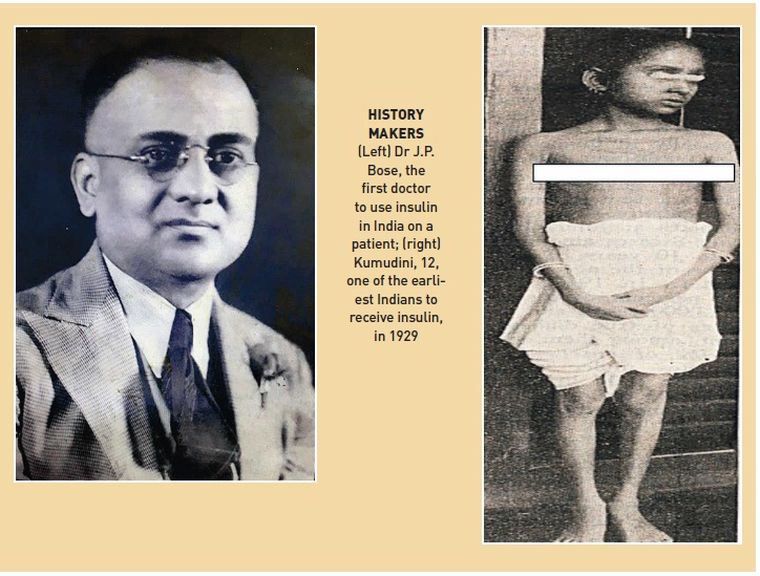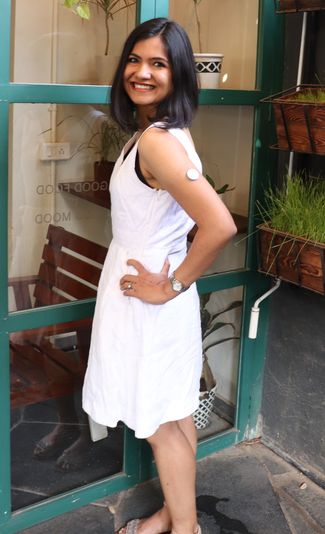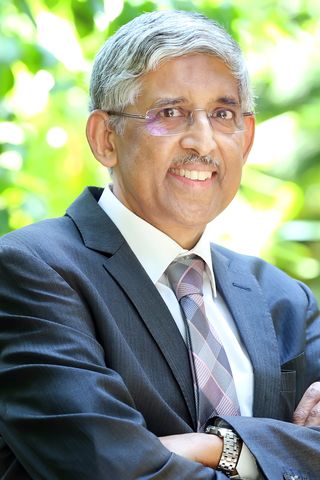Death seemed imminent for Leonard Thompson. The 14-year-old with type-1 diabetes was drifting in and out of diabetic coma. He weighed just 30kg when he was brought to Toronto General Hospital in Canada in 1922. His father, Harold Thompson, held on to hope as he allowed doctors to treat his son with insulin—it had never been tested on humans before. The wonder drug, discovered by Frederick Banting and Charles Best in 1921, gave Leonard a new lease of life.
Interestingly, insulin was in use in India in 1923. A group of Indian researchers have found interesting facts about India’s long-forgotten early recipients of insulin. "Nothing has been written on them in the last 50 years," said Dr V. Mohan, chairman of Dr Mohan’s Diabetes Specialities Centre, Chennai. "The first Indian to be treated with insulin was a 35-year-old in a diabetic coma. The patient most likely had type-1 diabetes. In 1929, a 12-year-old girl named Kumudini who was admitted to the Carmichael Hospital in Calcutta received insulin. Kumudini who was married at 11 had type-1 diabetes." While delving into the history of insulin in pre-Independence India, Mohan came across an article by Dr J.P. Bose on diabetes in children, wherein he mentioned how two children, a boy and a girl, dramatically recovered after receiving insulin.
This year, as the world celebrates the 100th anniversary of the discovery of insulin, Jazz Sethi, 26, gifted herself an artificial pancreas. Jazz is the first user of the DIY artificial pancreas system in India. A professional dancer and daughter of former world billiard champion Geet Sethi, Jazz has been living with type-1 diabetes for 12 years. Artificial pancreas system is a real gamechanger, said Jazz. “It works by using a third-party communication radio device to communicate between the pump and the continuous glucose monitor. The third-party rig I have costs $150. And then, you have to actually build and code the app.” The DIY artificial pancreas system, she said, is very efficient in managing sugar levels.
To celebrate insulin’s 100th anniversary, Jazz is launching an ‘I Love Insulin’ campaign in September. “Have you seen those ‘I Love New York’ T-shirts? We are planning something along those lines,” she said. “It is about making insulin the hero of the story, to say that this is your lifelong companion. So, we are going to have a party and celebrate. We are also going to be working on distributing free insulin to those who cannot afford it because that is a big issue in our country; a lot of kids do not have access to insulin.”
The discovery of insulin as a medication is considered one of the greatest breakthroughs in modern medicine. On July 30, 1921, Banting and Best injected a diabetic dog (dog 410) with a pancreatic extract that they prepared, and found that the hormone lowered the dog’s blood sugar levels to normal.
Even 100 years after its discovery, there is no substitute for insulin. “Insulin is the only treatment for type-1 diabetes,” said Dr Ambrish Mithal, chairman, endocrinology and diabetes, Max Super Speciality Hospital, Saket. “People with type-1 diabetes cannot survive without insulin as they cannot produce insulin on their own. Before insulin was discovered, a child with type-1 diabetes would live only for a few months or years. Today they can live much longer,” said Mithal.
Forgotten history
What young Leonard Thompson received as the first shot were crude extracts of insulin from a dog. Commercial production of insulin started in 1923, said Mohan, who is currently working on a book titled Banting, Bose, and Beyond: The Journey of Insulin in India.
Dr J.P. Bose of Kolkata received a stock of insulin the same year the commercial production began. “Bose, a Fellow of the Royal Society, got insulin from his sources in London,” said Dr Sathinath Mukhopadhyay, professor, department of endocrinology, Institute of Post Graduate Medical Education and Research, Kolkata. “Bose was the first doctor to use insulin in India on a patient. Also, his clinic at the Calcutta School of Tropical Medicine was the first diabetes clinic in the country.”
Insulin resistance
“I know patients who allow their children to die by not letting them take insulin,” said Mohan. His centre has been providing insulin to poor patients free of cost since 1991. Geetha Murukan, one of the first patients selected for the centre’s free insulin programme, was short for her age. She was 13 and did not have her period yet. She had type-1 diabetes and her sugar was not controlled. “She started getting her periods after she took insulin. She grew taller and her parents were happy,” said Mohan. They would meet him once a month to follow-up. After a year, they stopped showing up. “We called her father. He said the girl had died. A village quack told him that insulin may cause cancer and suggested the girl be given some traditional medicine. The quack assured him that she would be cured of diabetes if she took those medicines instead of insulin,” he said.
Mohan explained to him that patients with type-1 diabetes cannot survive without insulin. “Murukan said the girl went into a coma three days after she discontinued insulin. He got her admitted to a hospital but she soon died,” said Mohan.
Denying insulin to a child with type-1 diabetes is nothing short of murder, according to Mohan. He held a press meet in Chennai after the incident, passionately appealing to the press to cover it. Shortly after, he was bombarded with phone calls threatening to kill him. “One person even told me that he would hire goons and get me killed if I tried to promote insulin,” he said.
Rising cost
The cost of insulin used to be Rs12 when I started my practice, said Mohan. Now a vial costs about Rs150. This means that a patient would have to shell out Rs5,000-6,000 a year even if they take the cheapest insulin. Middle-class and poor patients would struggle, unless the government gives it for free.
But even making it free may not be enough. Perumal, 13, one of Mohan’s patients had high sugar levels. His glucose level was in the range of 300-400mg/dl. “Every time I would increase his insulin, but his sugar levels would not come down,” said Mohan. Once when Perumal came for a check-up along with his father, Mohan told the father to wait outside the room. He asked the boy whether he took the insulin. After much resistance, the boy eventually admitted that his dad would take away the insulin vials he got from the clinic free of cost and sell them to a pharmacy. He would spend the money on alcohol. The boy said he would give him a quarter of the dose. He would give him just enough insulin to keep him alive, but not enough to control his sugar.
Spread the word
If Nupur Lalvani were born about 100 years ago, she would not have survived with a diagnosis of type-1 diabetes. “I feel incredibly lucky to be born in this century and have access to insulin, thanks to Banting and Best, other tools related to diabetes and the right support and education,” said Lalvani, who was diagnosed at eight. She has been taking four to six injections a day from the first day. An avid marathoner, writer, diabetes activist and panellist, she has represented people with diabetes on several fora organised by the WHO. “Insulin is a magic hormone that keeps me alive and I have zero complaints,” she said.
The 33-year-old from Mumbai, however, feels there is no room for complacency. “I think it is not enough to celebrate my own good fortune because there are millions out there without the basics. Blue Circle Diabetes Foundation, our NGO, will be shortly launching Project Isha, where we will not only provide glucometers, syringes and insulin, to the socially and economically disadvantaged, but also weekly diabetes education and mentoring through trained mentors living with diabetes themselves,” said Lalvani. She also wants to address the stigma and hesitation around taking insulin.
Insulin, once a week?
The last 100 years have witnessed tremendous advancement in insulin therapy, from the initial crude extracts derived from animals to novel human insulin analogues produced by use of biotechnology, said Dr Sarah Alam, consultant, endocrinology, Asian Institute of Medical Sciences, Faridabad. “Insulin is required in diabetic patients if there is initial presentation with very high HbA1c (haemoglobin A1c test), prominence of catabolic symptoms like weight loss, HbA1c remains above target despite triple therapy (oral antidiabetic agents) or possibility of type-1 diabetes mellitus (autoimmune disease) or pancreatogenic diabetes,” said Alam.
At present, insulin needs to be given once daily or multiple times a day depending on the glucose values. Newer insulins that are being developed offer much hope. “There are several trials going on for a weekly insulin. There is much excitement with the novel bioengineered insulins aiming to improve absorption, meal timing flexibility and lesser hypoglycaemic events and thus improvement in quality of life of people living with diabetes,” said Alam.
Good news for pregnant mothers
Until insulin was discovered, pregnant women with type-1 diabetes could not have a baby. During pregnancy, they would develop complications. Most of them did not live long enough to get married or conceive.
Insulin changed lives. However, to what extent you can control sugar levels in pregnant women is still debatable. “We usually aim for a tighter target so that the baby is not impacted by the mother’s abnormal sugar levels,” said Dr S. Nallaperumal, a consultant diabetologist at Prashanth Hospital, Chennai. “Ideally, a pregnant mother’s fasting glucose level should be less than 90mg/dL and the post-meal glucose level should be less than 120mg/dL. It is less than the normal range for non-pregnant adults and is more stringent than what we aim to achieve for sick patients in an ICU. We need to control it that way for 300 days.”
Maintaining a fine balance between avoiding hypoglycaemia in the mother and reducing the exposure to the foetus is challenging. “The arrival of analogue insulin—a modified human insulin, which closely resembles naturally produced human insulin—has helped us towards that goal. Now, the risk for hypoglycaemia is vastly reduced for the mother. The foetal outcomes are also better.”
Type-2 diabetes
While insulin is the undisputed lifesaver for those with type-1 diabetes, for people with type-2 diabetes it is commonly needed as the beta cells of the pancreas gradually fail and insulin production declines.
However, the advent of newer drugs has led to a delay in the need for insulin for people with type-2 diabetes. “Not in the late phase, but in earlier phases of type 2, the advent of newer drugs like GLP1-related molecules and SGLT2 inhibitors may preclude the use of insulin in some cases,” said Mithal.
What happened to Kumudini?
Kumudini probably did not live long as there is no record of a follow-up. The insulin given to her was crude and the doctors did not know enough about the quantity to be administered. Now that it has been perfected, patients live long, said Mohan. “We have come a long way from when children with type-1 diabetes would live for only a few months. Today, such children can hope to live longer, even up to 90 years,” he said.
Mina Fernandes is living proof that people with type-1 diabetes can expect to live as long as their peers who do not have the disease. The 72-year-old, who has lived with it for 62 years, is one of the oldest and longest type-1 diabetes survivor in India.
Insulin’s success saga continues.
(Some names are changed.)






